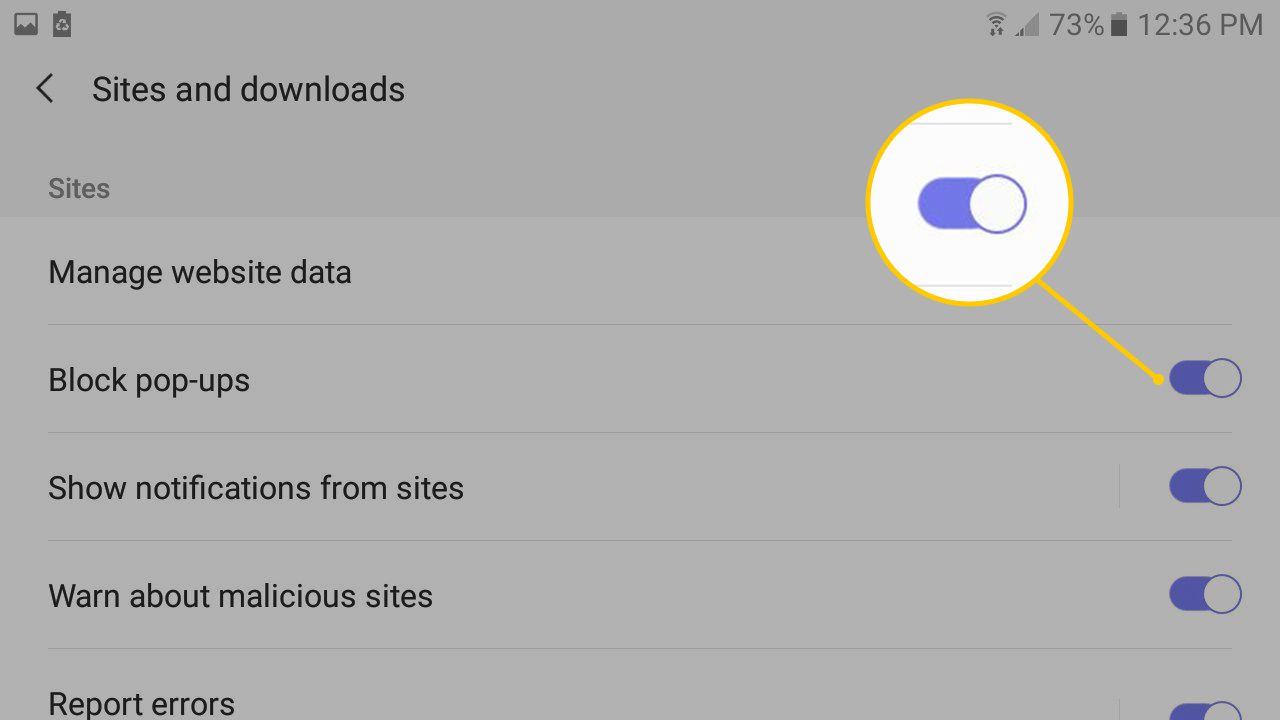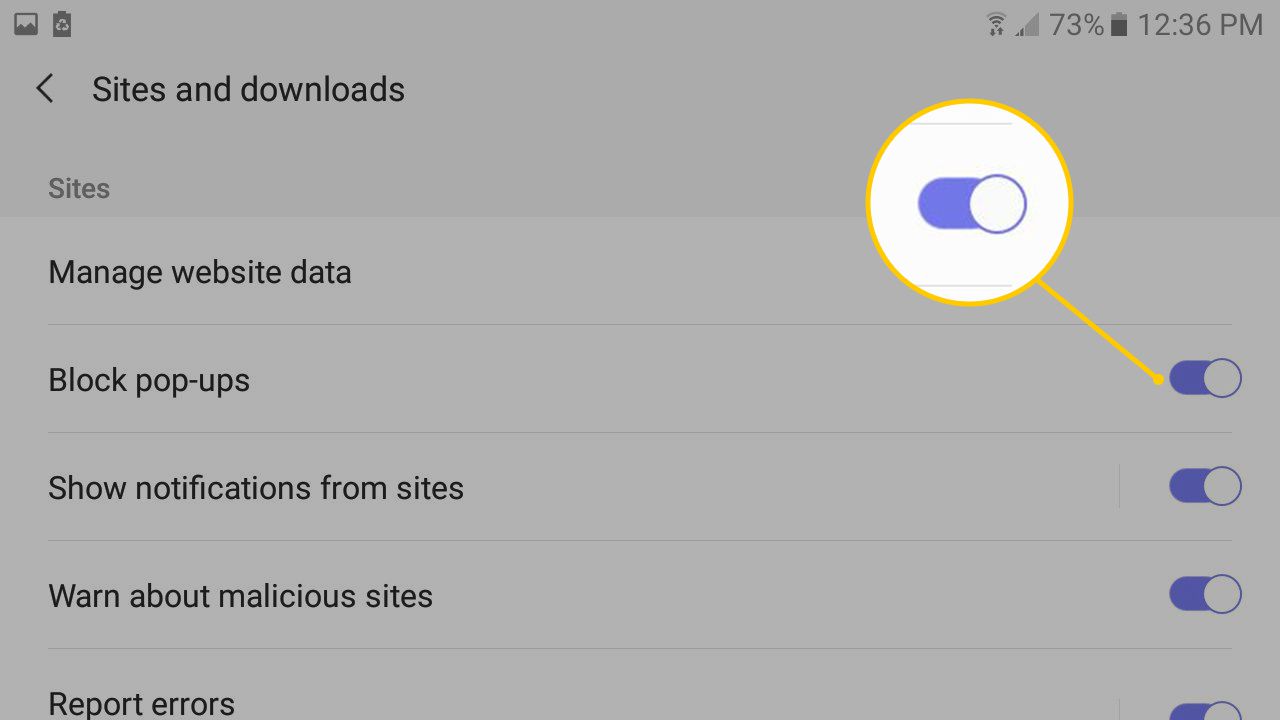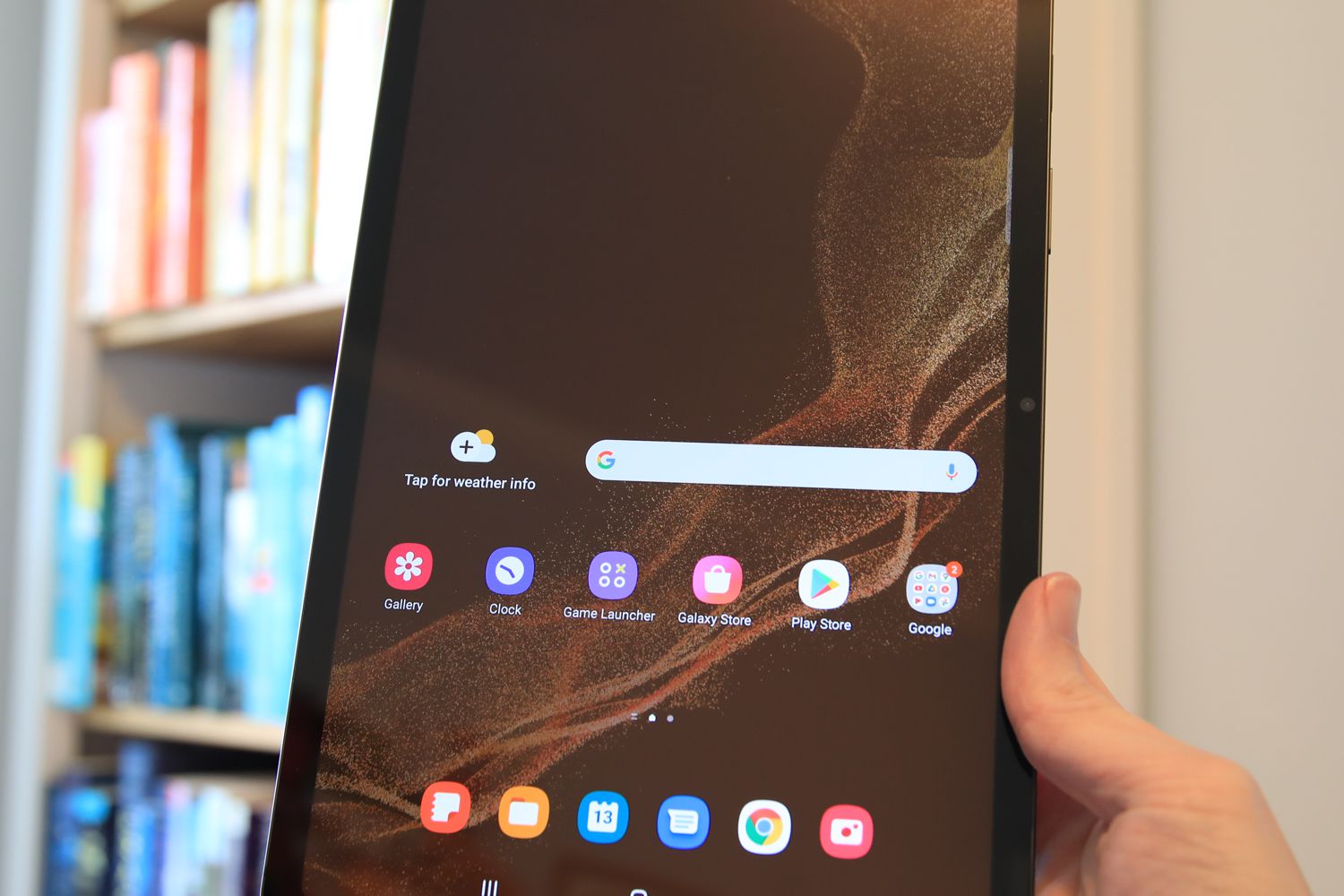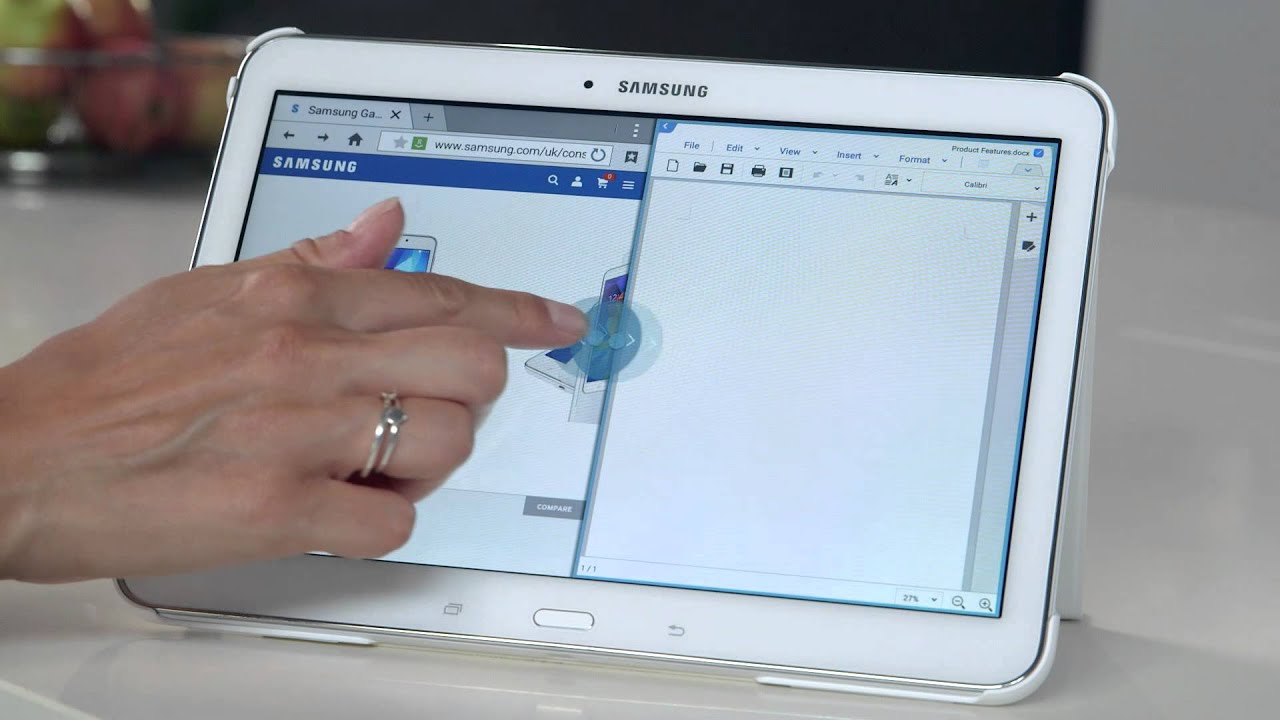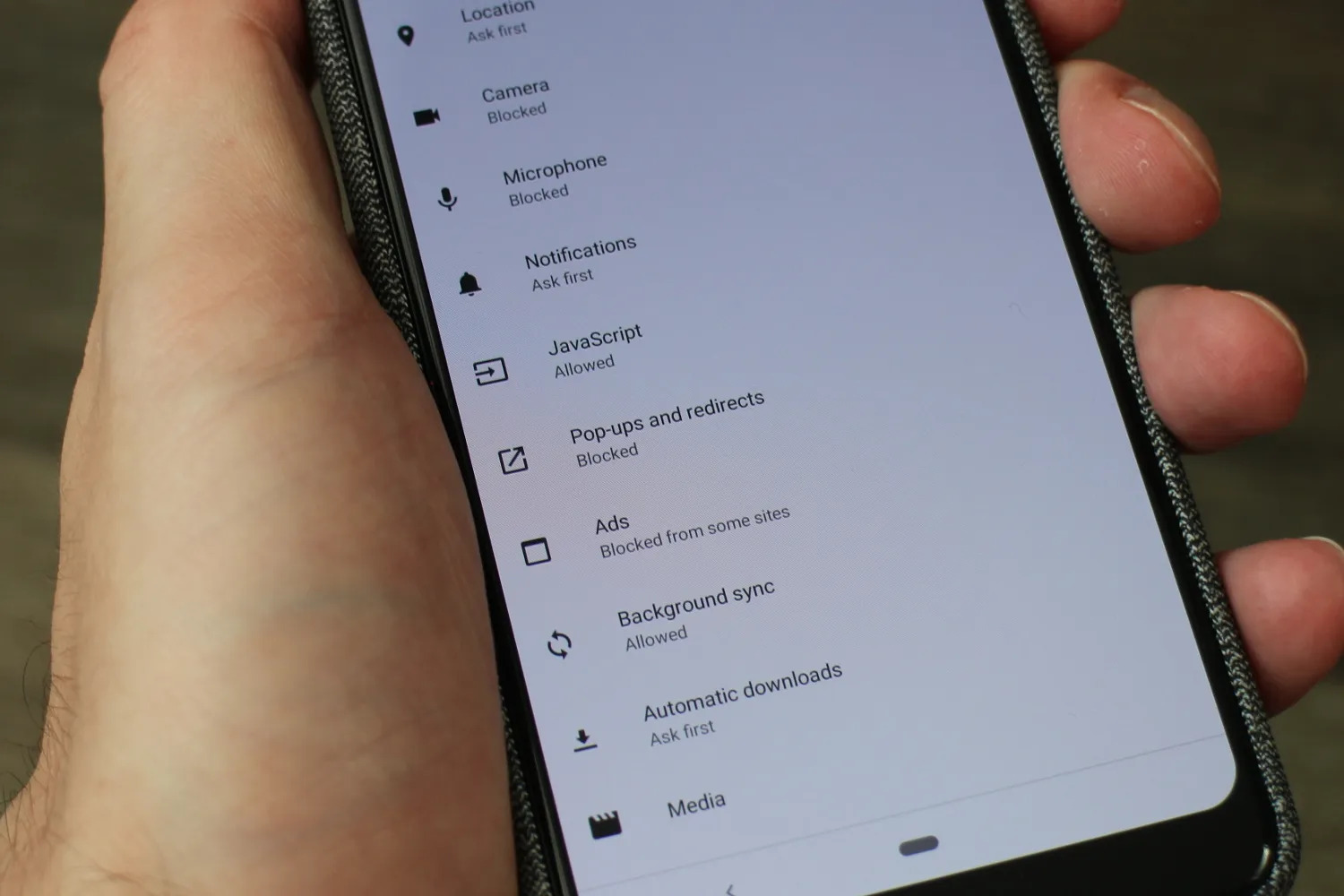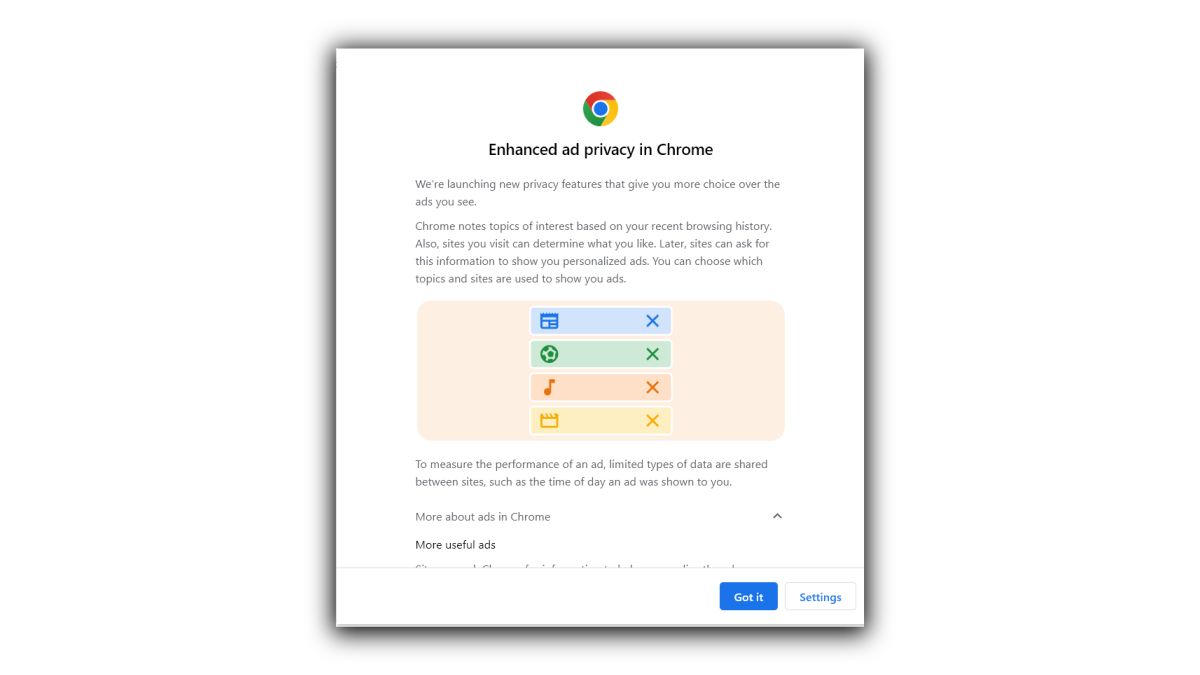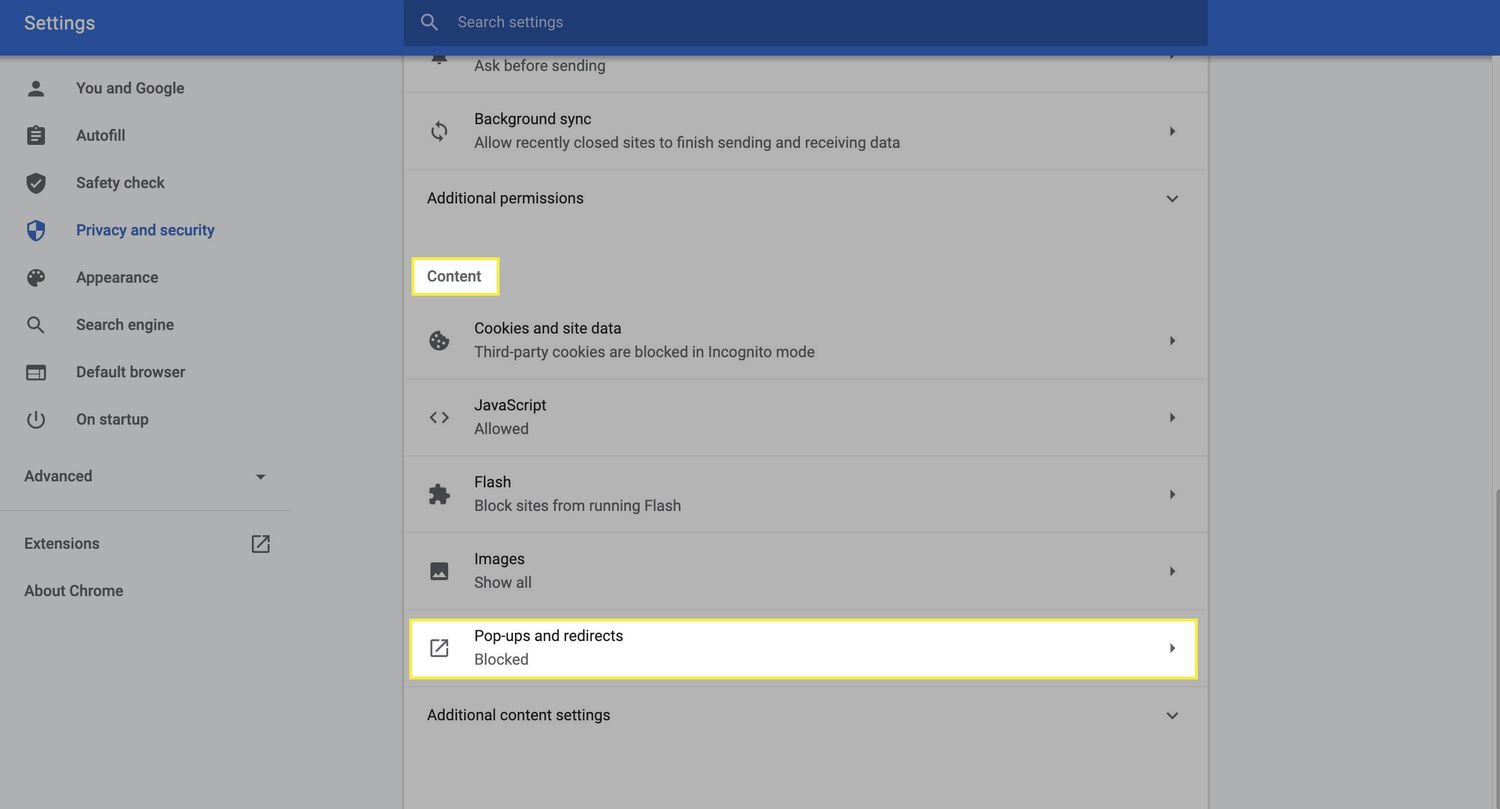Introduction
Pop up ads can be an intrusive and frustrating experience for tablet users. These annoying advertisements seem to appear out of nowhere, interrupting your browsing experience and often leading to unintended clicks. If you are wondering how to get rid of pop up ads on your tablet, you have come to the right place.
In this article, we will dive into the world of pop up ads, exploring the reasons why they appear on your tablet and how you can prevent them from disrupting your online activities. With a few simple steps, you can regain control of your browsing experience and enjoy uninterrupted use of your tablet.
Understanding the nature of pop up ads is important when it comes to combating them effectively. Pop ups are intrusive advertisements that appear in a separate window, overlaying the content that you are trying to access. They can vary in form, from simple banners to full-screen interstitials, and often contain flashy graphics or enticing offers to grab your attention.
Now, you may be wondering why these pop up ads seem to be targeting your tablet specifically. Well, there are several factors that contribute to the appearance of pop ups on your device. One common cause is visiting websites that display intrusive ads designed to generate revenue for website owners. Additionally, certain apps and even malware can be responsible for flooding your tablet with pop ups.
In the following sections, we will explore the common sources of pop up ads on tablets and provide you with practical steps to prevent them. By following these measures, you can ensure a smoother and more enjoyable browsing experience on your tablet.
Understanding Pop Up Ads
Pop up ads have become a prevalent annoyance in today’s digital world. These intrusive advertisements can disrupt your online experience and even pose security risks. To effectively combat pop up ads on your tablet, it is crucial to understand how they work and the tactics employed by advertisers.
Pop up ads are typically designed to capture your attention and encourage interaction. They are often triggered by specific user actions, such as clicking on a link or visiting a particular website. Once triggered, a separate window or overlay is displayed on your screen, diverting your attention from the original content.
The purpose of these pop ups varies. Some advertisers use them to promote their products or services, aiming to grab your attention and entice you to make a purchase or click on their ad. Others may use pop ups to generate revenue by displaying ads from third-party networks.
One common form of pop up ad is the “exit intent” pop up. These appear when you attempt to leave a website, employing clever tactics to persuade you to stay. They may offer discounts, freebies, or exclusive content in exchange for your email address or continued engagement.
Additionally, some pop ups are designed to deceive users. These deceptive pop ups use scare tactics, such as fake virus alerts or urgent warnings, to trick you into taking action. They often employ aggressive language or alarming visuals to create a sense of urgency.
It is important to note that not all pop ups are malicious or harmful. Some legitimate websites use pop ups sparingly to provide useful information or offer newsletter subscriptions. However, the majority of pop up ads are intrusive and disruptive, compromising the user experience.
Now that you have a better understanding of pop up ads and their purposes, it is time to delve into the reasons why they appear specifically on your tablet. In the next section, we will explore the common sources of pop up ads on tablets and how to identify them.
Why Pop Up Ads Appear on Your Tablet
Pop up ads can be a persistent issue on your tablet, and understanding why they appear is the first step towards effectively combating them. There are several factors that contribute to the presence of pop up ads on your device, ranging from website practices to malicious software.
One common reason for the appearance of pop up ads on your tablet is visiting websites that utilize intrusive advertising practices. Some websites rely on revenue generated by displaying pop up ads, often from third-party networks. These websites may have advertisements embedded within their content or use scripts that trigger pop ups during your browsing session.
Another common cause of pop up ads on your tablet is the installation of certain apps. Some free apps generate revenue by displaying advertisements, including pop ups, while you use the app. These ads can be triggered when you open the app or during specific actions within the app. It is important to be cautious when downloading apps from unknown sources, as these apps may contain adware or malware that result in continuous pop up ads on your tablet.
In some cases, malicious software or adware may have infiltrated your tablet. This can occur when you unknowingly download an infected app or click on a suspicious link. Once installed, this software can bombard your tablet with pop up ads, collect your personal information, or engage in other malicious activities.
Additionally, your browsing habits can also contribute to the appearance of pop up ads on your tablet. Clicking on suspicious links or visiting websites with a reputation for hosting intrusive ads can expose your device to more pop ups. Malicious actors may also use social engineering techniques or phishing schemes to trick you into clicking on links that lead to pop up ads.
By understanding the reasons why pop up ads appear on your tablet, you can take proactive steps to prevent their appearance and protect yourself from potential security risks. In the next section, we will discuss common sources of pop up ads on tablets and provide strategies to prevent them.
Common Sources of Pop Up Ads on Tablets
Pop up ads on tablets can originate from various sources. Understanding these common sources is essential in order to effectively address and prevent the appearance of these intrusive ads. Let’s explore the main culprits behind pop up ads on tablets.
1. Websites with intrusive advertising practices: Some websites rely heavily on intrusive ads to generate revenue. These websites may embed pop up ads within their content or utilize scripts that trigger pop ups during your browsing session. It’s important to note that not all websites with pop up ads are malicious, but certain sites may employ more aggressive advertising tactics than others.
2. Ad-supported apps: Many free apps generate revenue through advertising. Ad-supported apps typically display ads while you use the app, including the possibility of pop up ads. Be cautious when downloading free apps from unfamiliar sources, as they might contain adware or malware that flood your tablet with pop up ads. Stick to reputable app stores and read user reviews to ensure you are downloading legitimate and trustworthy apps.
3. Clicking on suspicious links: Clicking on suspicious links, whether in emails, text messages, or websites, can lead to pop up ads on your tablet. Malicious actors often use social engineering tactics to trick users into clicking on links that trigger these ads. Exercise caution and avoid clicking on links from unknown or untrusted sources to minimize the risk of encountering pop up ads.
4. Malware and adware: Malicious software, such as adware or malware, can infect your tablet and result in the continuous appearance of pop up ads. This can occur when downloading infected apps or clicking on malicious links. It’s crucial to have reliable security software installed on your tablet and regularly update it to detect and eliminate any potential threats.
5. Unwanted apps: Sometimes, inadvertently installing unwanted or rogue apps on your tablet can lead to pop up ads. These apps may include adware or have hidden functionality that triggers the display of pop up ads. It’s important to regularly review the installed apps on your tablet and uninstall any suspicious or unnecessary ones.
By familiarizing yourself with these common sources of pop up ads on tablets, you can adopt proactive measures to mitigate their appearance. In the next section, we will discuss practical strategies to prevent pop up ads on your tablet and enjoy a smoother browsing experience.
How to Prevent Pop Up Ads on Your Tablet
Dealing with pop up ads on your tablet can be frustrating, but there are effective measures you can take to prevent their appearance and regain control of your browsing experience. Follow these practical steps to minimize pop up ads on your tablet:
1. Update your tablet’s operating system: Keeping your tablet’s operating system up to date is crucial for security and performance. System updates often include bug fixes and security patches that can prevent malicious software from causing pop up ads.
2. Disable pop up ads in browser settings: Most browsers offer options to block pop up ads. Access the settings of your preferred browser and enable the built-in pop up blocker. This will help prevent pop up ads from appearing while you browse the web.
3. Install an ad blocking app: Consider installing an ad blocking app on your tablet. These apps can effectively block pop up ads as well as other types of intrusive advertisements, providing a more seamless browsing experience. Check app stores for reputable ad blocking apps and read user reviews before installing.
4. Clear cache and cookies: Periodically clearing your browser’s cache and cookies can help prevent pop up ads. These temporary files can accumulate and sometimes contain data that triggers the appearance of pop ups. Clearing them can improve performance and reduce the likelihood of encountering intrusive ads.
5. Avoid clicking on suspicious links: Be cautious when clicking on links, especially those shared through emails, text messages, or on unfamiliar websites. Verify the source and legitimacy of the link before clicking, as malicious links can lead to pop up ads or even the installation of malware.
6. Be cautious while downloading apps: Stick to reputable app stores and avoid downloading apps from unknown or untrusted sources. Read user reviews, check app permissions, and be mindful of apps that promise too-good-to-be-true features or functionalities. This will help minimize the risk of downloading apps that display unwanted pop up ads.
7. Remove suspicious apps: Regularly review the apps installed on your tablet and uninstall any suspicious or unnecessary applications. Pay attention to apps that display excessive pop up ads or exhibit suspicious behavior. Cleaning up your app inventory can significantly reduce the chances of encountering intrusive ads.
8. Reset your tablet to factory settings: If all else fails and pop up ads persistently appear on your tablet, you may consider resetting it to factory settings. This will erase all data and apps, including any potential malware or adware that could be causing the pop ups. Remember to backup important data before performing a factory reset.
By implementing these preventative measures, you can minimize the occurrence of pop up ads on your tablet and enjoy a more enjoyable and uninterrupted browsing experience.
Step 1: Update Your Tablet’s Operating System
One of the most important steps to prevent pop up ads on your tablet is to ensure that your device’s operating system is up to date. Regular system updates are crucial for maintaining the security and performance of your tablet. Here’s how you can update your tablet’s operating system:
1. Check for system updates: Go to the settings menu on your tablet and look for the “System” or “Software Update” option. This may vary depending on your device’s make and model. Tap on this option to check for available updates.
2. Download and install updates: If there are any updates available, follow the on-screen prompts to download and install them. Make sure your device is connected to a stable Wi-Fi network during the update process, as system updates can sometimes be large in size.
3. Enable automatic updates: To ensure that your tablet stays up to date with the latest software releases, consider enabling automatic updates. This way, your tablet will check for updates regularly and download them in the background, ensuring that you have the most recent security patches and bug fixes.
Updating your tablet’s operating system is essential for protecting it against the latest security threats. System updates often contain security patches that address vulnerabilities that could be exploited by malicious software or adware. By keeping your tablet up to date, you reduce the risk of encountering pop up ads caused by malware or other security breaches.
In addition to security enhancements, system updates can also improve the overall performance and stability of your tablet. By installing the latest updates, you can benefit from bug fixes and optimizations that may prevent issues, including pop up ads, from occurring on your device.
Remember to check for updates regularly and install them as soon as they become available. Setting aside a specific time each week or month to check for updates can help ensure that your tablet remains protected against potential security threats and unwanted pop up ads.
By keeping your tablet’s operating system up to date, you are taking an important step towards preventing the appearance of pop up ads and maintaining the overall security and efficiency of your device.
Step 2: Disable Pop Up Ads in Browser Settings
Another effective way to prevent pop up ads on your tablet is by disabling them in your browser settings. Most modern browsers offer built-in options to block pop up ads, providing you with more control over your browsing experience. Follow these steps to disable pop up ads in your browser:
1. Open your browser settings: Launch your preferred browser on your tablet and look for the settings menu. This is usually represented by three dots or lines in the top-right or bottom-right corner of the browser window. Tap on the menu icon to access the settings.
2. Locate the pop up settings: Once in the settings menu, scroll down or navigate through the options to find the pop up settings. This may be listed as “Site Settings,” “Content Settings,” or “Advanced Settings,” depending on the browser you are using.
3. Disable pop up ads: In the pop up settings, you should find an option to block or disable pop up ads. Enable this option to prevent pop ups from appearing while you browse the web. Some browsers also allow you to customize the pop up settings, giving you more control over which sites are allowed to display pop ups.
4. Save changes and restart the browser: After disabling pop up ads, save your changes and exit the settings menu. It may be necessary to restart your browser for the changes to take effect. Once you relaunch the browser, pop up ads should no longer disrupt your browsing experience.
Disabling pop up ads in your browser settings provides an efficient way to prevent these intrusive advertisements from appearing while you browse the internet on your tablet. By blocking pop ups, you can enjoy a smoother and more seamless browsing experience without unnecessary interruptions.
It’s important to note that some websites rely on pop up ads for essential features or content. Disabling all pop ups may prevent you from accessing certain functionalities on those sites. However, most modern browsers allow you to whitelist specific websites, granting them permission to display pop ups while still blocking them on other sites.
Regularly checking and adjusting your browser settings to block pop up ads can help maintain a pop-up-free browsing experience on your tablet. Remember to update your browser regularly to ensure that you have access to the latest features and security enhancements.
With pop up ads disabled in your browser settings, you can browse the web on your tablet without the annoyance and disruption caused by these intrusive advertisements.
Step 3: Install an Ad Blocking App
Installing an ad blocking app on your tablet is another effective way to prevent pop-up ads and other intrusive advertisements from disrupting your browsing experience. These apps are designed to block ads across various websites and applications, providing you with a more seamless and enjoyable browsing experience. Follow these steps to install an ad blocking app on your tablet:
1. Research ad blocking apps: Start by researching and identifying reputable ad blocking apps for your tablet. Look for apps that have positive user reviews, a good reputation, and a track record of effectiveness in blocking ads.
2. Check compatibility and requirements: Ensure that the ad blocking app you choose is compatible with your tablet’s operating system. Check the app’s system requirements and make sure your device meets them to ensure smooth installation and functionality.
3. Download and install the app: Once you have selected the ad blocking app that suits your needs, download it from a trusted source such as the Google Play Store or the Apple App Store. Follow the on-screen instructions to install the app on your tablet.
4. Configure the ad blocking app: After installation, open the ad blocking app and review the available settings. Some apps allow you to customize the level of ad blocking, whitelist certain websites, or enable additional features. Adjust the settings according to your preferences.
5. Enable the ad blocking app: Once you have configured the app’s settings, enable it to activate the ad blocking feature. The app will then work in the background, blocking ads from appearing in your browser and other applications on your tablet.
Ad blocking apps not only block pop up ads, but they also prevent other types of intrusive ads from being displayed on your tablet. These apps can significantly improve your browsing experience by reducing distractions, speeding up page load times, and conserving bandwidth.
It’s worth noting that some websites or apps rely on ad revenue to provide free content or services. Overly aggressive ad blocking can impact the revenue stream of these sites. If you want to support certain websites, consider whitelisting them in the ad blocking app or disabling the app temporarily.
Regularly update your ad blocking app to ensure that you have the latest ad blocking lists and improvements. Developers continuously update their apps to adapt to new advertising techniques and to block emerging forms of intrusive ads.
With an ad blocking app installed on your tablet, you can enjoy a cleaner and more streamlined browsing experience, free from annoying pop up ads and other intrusive advertisements.
Step 4: Clear Cache and Cookies
Clearing the cache and cookies on your tablet can help prevent pop up ads and improve your browsing experience. Over time, temporary files and stored website data can accumulate, potentially causing conflicts and triggering the appearance of intrusive ads. Follow these steps to clear the cache and cookies on your tablet:
1. Open the settings menu: Navigate to the settings menu on your tablet. The location of the settings menu may vary depending on your device’s make and model. Look for the gear or cogwheel icon, which typically signifies the settings menu.
2. Find the app or browser settings: In the settings menu, locate the section related to apps or browsers. This section might be named “Apps,” “Applications,” or “Applications Manager,” depending on your tablet’s operating system.
3. Select the browser or app: Once in the app or browser settings, scroll through the list of installed apps or browsers and find the one you use for browsing the internet. It is usually labeled as “Browser” or the name of the specific browser you use (e.g., Chrome, Safari, Firefox).
4. Clear cache and cookies: Tap on the browser or app to access its settings. Look for an option to clear cache and cookies. This option may be located under the “Storage” or “Privacy” section of the browser or app settings. Select the option to clear cache and cookies.
5. Confirm the clearing process: Depending on your tablet’s operating system and browser, you may be asked to confirm the clearing process. Read the prompt carefully and confirm that you want to clear the cache and cookies. Keep in mind that clearing these files will log you out of websites and remove stored data.
6. Restart the browser: After clearing the cache and cookies, exit the settings and restart the browser. This will ensure that the changes take effect. When you relaunch the browser, it will start with a clean slate, free from accumulated temporary files and stored website data.
Clearing the cache and cookies on your tablet helps eliminate temporary files that could potentially trigger or contribute to the appearance of pop up ads. It also allows your browser to load web pages faster and more efficiently.
It’s important to note that clearing cache and cookies will log you out of websites and remove stored preferences, such as saved passwords. You may need to log back into your favorite websites and reset any personalized settings.
To maintain a smooth browsing experience and prevent pop up ads in the future, consider clearing the cache and cookies periodically or whenever you notice a significant increase in the appearance of intrusive ads.
By regularly clearing the cache and cookies on your tablet, you can minimize the presence of pop up ads and enjoy a cleaner and faster browsing experience.
Step 5: Avoid Clicking on Suspicious Links
One of the most effective ways to prevent pop up ads on your tablet is to exercise caution and avoid clicking on suspicious links. Malicious actors often use social engineering tactics to trick users into clicking on links that lead to pop up ads or even the installation of malware. By following these guidelines, you can minimize the risk of encountering intrusive ads:
1. Verify the source: Before clicking on any link, take a moment to verify the source. Be wary of links that are sent to you via email, text message, or social media from unknown or untrusted sources. If the sender’s identity or intentions are unclear, it’s best to avoid clicking on the link.
2. Check the URL: Hover over the link with your cursor (on a browser) or press and hold the link (on a mobile app) to reveal the actual URL. This allows you to see where the link leads before clicking on it. If the URL seems suspicious, contains random characters, or differs from what was expected, do not click on it.
3. Watch out for misleading URLs: Phishing attacks often use URLs that mimic legitimate websites. Double-check the URL for any misspellings or additional characters that might indicate a fraudulent website. For example, “g00gle.com” might be an attempt to deceive you into believing it is the legitimate “google.com.”
4. Don’t be swayed by urgency: Be cautious of links that create a sense of urgency or pressure you into taking immediate action. Scammers often use urgency as a tactic to manipulate users into clicking on links they might otherwise avoid. Take a step back and evaluate the situation before clicking.
5. Beware of suspicious ads: Some pop up ads are designed to mimic legitimate notifications or error messages. They may claim that your device is infected, that you have won a prize, or that your account has been compromised. Recognize these tactics and avoid interacting with such ads. Close the pop up window or navigate away from the page.
6. Use a trusted security solution: Install and regularly update a reputable security solution on your tablet. This can provide an added layer of protection by scanning links and websites for potential risks, alerting you to potential threats before you click on them.
By exercising caution and skepticism when it comes to clicking on links, you can significantly reduce the chances of encountering pop up ads and other malicious content on your tablet.
Remember, it’s always better to err on the side of caution and refrain from clicking on suspicious links. If in doubt, it’s best to conduct your own research, reach out to the supposed sender directly, or visit the official website manually by typing in the URL instead of relying on links.
By following these guidelines and being vigilant, you can protect your tablet from unwanted pop up ads and potential security threats.
Step 6: Be Cautious While Downloading Apps
Being cautious while downloading apps is essential to prevent pop up ads and ensure the security of your tablet. Some free apps may display intrusive advertisements, including pop ups, while you use them. Here are some important steps to follow when downloading apps to minimize the risk of encountering unwanted pop up ads:
1. Stick to reputable app stores: Download apps only from trusted and reputable app stores such as the Google Play Store (for Android devices) or the Apple App Store (for iOS devices). These stores have stringent review processes to minimize the risk of apps containing malware or adware.
2. Read user reviews: Before downloading an app, check the user reviews and ratings. Look for feedback related to excessive pop up ads, suspicious behavior, or any red flags that may indicate potential issues with the app. Consider avoiding apps with consistently negative or concerning reviews.
3. Check app permissions: Review the app’s permissions before installing it. Be cautious of apps that request excessive permissions unrelated to their functionality. For example, a simple gaming app should not require access to your contacts or personal information.
4. Avoid downloading from unknown sources: To minimize the risk of encountering pop up ads and other security threats, avoid downloading apps from unknown or third-party sources. Such sources may not have the same level of security checks and protections as trusted app stores, increasing the likelihood of downloading an app that contains adware or malware.
5. Verify the app developer: Research the app developer before downloading their app. Check if they have a reputable track record and positive reviews for their other apps. Well-established developers are less likely to distribute apps that display intrusive pop up ads.
6. Be wary of too-good-to-be-true offers: Exercise caution with apps that promise extraordinary features, discounts, or freebies. Some apps employ deceptive advertising tactics to lure users and display pop up ads or collect personal information. If an app’s promises seem too good to be true, it’s best to approach with caution or avoid it altogether.
7. Stay up-to-date with app news: Stay informed about any news or reports related to apps that display excessive pop up ads or engage in deceptive practices. Technology news outlets and online forums often provide valuable insights and warnings about such apps. Being aware of potential risks can help you make more informed decisions when downloading apps.
By following these precautions, you can minimize the risk of downloading apps that display unwanted pop up ads on your tablet. Taking the time to research and evaluate apps before installing them can go a long way in ensuring a safer, more enjoyable app experience.
Remember, the responsibility of app selection rests with you as the user. Be proactive in guarding your tablet against pop up ads by being cautious while downloading apps.
Step 7: Remove Suspicious Apps
Removing suspicious apps from your tablet is a crucial step in preventing pop up ads and maintaining the security of your device. Some apps may contain adware or hidden functionality that triggers the display of intrusive ads. Here’s how you can remove suspicious apps from your tablet:
1. Identify suspicious apps: Take a closer look at the apps installed on your tablet. Look for apps that display excessive pop up ads or exhibit suspicious behavior. Pay attention to apps that you don’t remember installing or those that have poor reviews or low ratings.
2. Read user reviews: Check the user reviews and ratings of the suspicious apps. Reviews from other users may provide insights into any potential issues or undesirable behavior associated with the app. If multiple users report pop up ads or other unwanted behavior, it’s a clear indication that the app should be investigated further.
3. Research the app: Conduct an internet search to gather more information about the suspicious app. Look for any news, reports, or articles related to the app’s behavior or potential security risks. Be wary of apps that have been flagged by reputable sources for displaying intrusive ads or engaging in unethical practices.
4. Check app permissions: Review the permissions requested by the suspicious app. If the app requests permissions unrelated to its functionality or asks for access to sensitive data without a clear justification, it’s a sign that the app may be engaging in malicious behavior.
5. Back up important data: Before proceeding with the removal of the suspicious app, back up any important data or settings associated with the app. This ensures that you can easily restore your data if needed, while also giving you peace of mind during the removal process.
6. Uninstall the app: Once you have gathered enough evidence to confirm that an app is suspicious or unwanted, proceed with uninstalling it from your tablet. On most devices, you can uninstall apps by going to the settings menu, locating the “Apps” or “Applications” section, finding the suspicious app in the list, and selecting the option to uninstall it.
7. Perform a malware scan: After removing the suspicious app, run a malware scan on your tablet using a reputable security solution. This will help identify and remove any remaining traces of malware or adware that may have been associated with the app.
By regularly reviewing and removing suspicious apps from your tablet, you can minimize the risk of encountering pop up ads caused by adware or other malicious software. Additionally, removing unwanted apps helps free up storage space and can improve the overall performance of your device.
Remember to be cautious when downloading and installing apps in the future. Take the time to research and evaluate apps before installation to avoid downloading suspicious or potentially harmful apps in the first place.
By actively managing the apps on your tablet and staying vigilant, you can create a safer and ad-free environment for your browsing experience.
Step 8: Reset your Tablet to Factory Settings
If all else fails and pop up ads persistently appear on your tablet, you may need to consider resetting it to factory settings. This step should only be taken as a last resort when other methods have been unsuccessful in getting rid of the intrusive ads. Here’s how you can reset your tablet to factory settings:
1. Backup your data: Resetting your tablet will erase all data and settings, so it is crucial to back up any important files or data beforehand. Connect your tablet to a computer or use cloud storage services to create a backup of your essential data.
2. Access the settings menu: Navigate to the settings menu on your tablet. The location of the settings menu may vary depending on your device’s make and model. Look for the gear or cogwheel icon, which typically represents the settings.
3. Look for “Reset” or “Backup and Reset”: In the settings menu, scroll down or navigate through the options until you find the “Reset” or “Backup and Reset” section. This section may also be named “Privacy” or “System” on some devices.
4. Select “Factory Data Reset”: Within the “Reset” or “Backup and Reset” section, locate the “Factory Data Reset” option. Tap on this option to initiate the reset process.
5. Confirm the reset: A warning message will appear, informing you that all data will be erased. Read the message carefully and proceed only if you are sure. Then, select the “Confirm” or “Reset” option to start the reset process.
6. Wait for the reset to complete: The reset process may take a few minutes to complete. Your tablet will reboot, and the original factory settings will be restored. Follow the on-screen instructions to set up your tablet as if it were brand new.
Performing a factory reset removes all apps, data, and settings from your tablet, including any potential malware or adware that may have been causing the pop up ads. However, it is important to note that a factory reset should only be done as a last resort, as it is a drastic measure that erases everything on your device.
Remember to reinstall apps and restore your data from the backup you created earlier. Take this opportunity to be cautious while reinstalling apps, ensuring that only trusted and reputable apps are installed on your tablet.
Performing a factory reset on your tablet brings it back to its original state, free from any unwanted pop up ads or other issues. It is advisable to regularly update your tablet’s operating system, use security software, and practice safe browsing habits to minimize the chances of encountering pop up ads in the future.
By following these steps and taking the necessary precautions, you can regain control of your tablet and enjoy a pop-up-free browsing experience.
Conclusion
Dealing with pop up ads on your tablet can be frustrating, but by following the steps outlined in this guide, you can effectively prevent these intrusive advertisements from disrupting your browsing experience. Understanding the nature of pop up ads, the reasons why they appear on your tablet, and the common sources of these ads is essential in taking proactive measures to block and eliminate them.
Updating your tablet’s operating system, disabling pop up ads in browser settings, and installing ad blocking apps are practical steps you can take to minimize the appearance of pop up ads. Regularly clearing cache and cookies, being cautious while downloading apps, and removing suspicious apps can further enhance your protection against intrusive ads.
If all else fails and pop up ads persist, resetting your tablet to its factory settings can be a last resort to eliminate any lingering malware or adware causing the pop ups.
Remember to practice safe browsing habits, such as being cautious when clicking on links and avoiding suspicious websites. Keeping your tablet’s operating system and apps up to date, along with using reputable security software, can go a long way in protecting your device from pop up ads and other potential security threats.
By implementing these measures and being proactive in your approach, you can ensure a smoother, more enjoyable browsing experience on your tablet, free from the disruption and annoyance of pop up ads.







